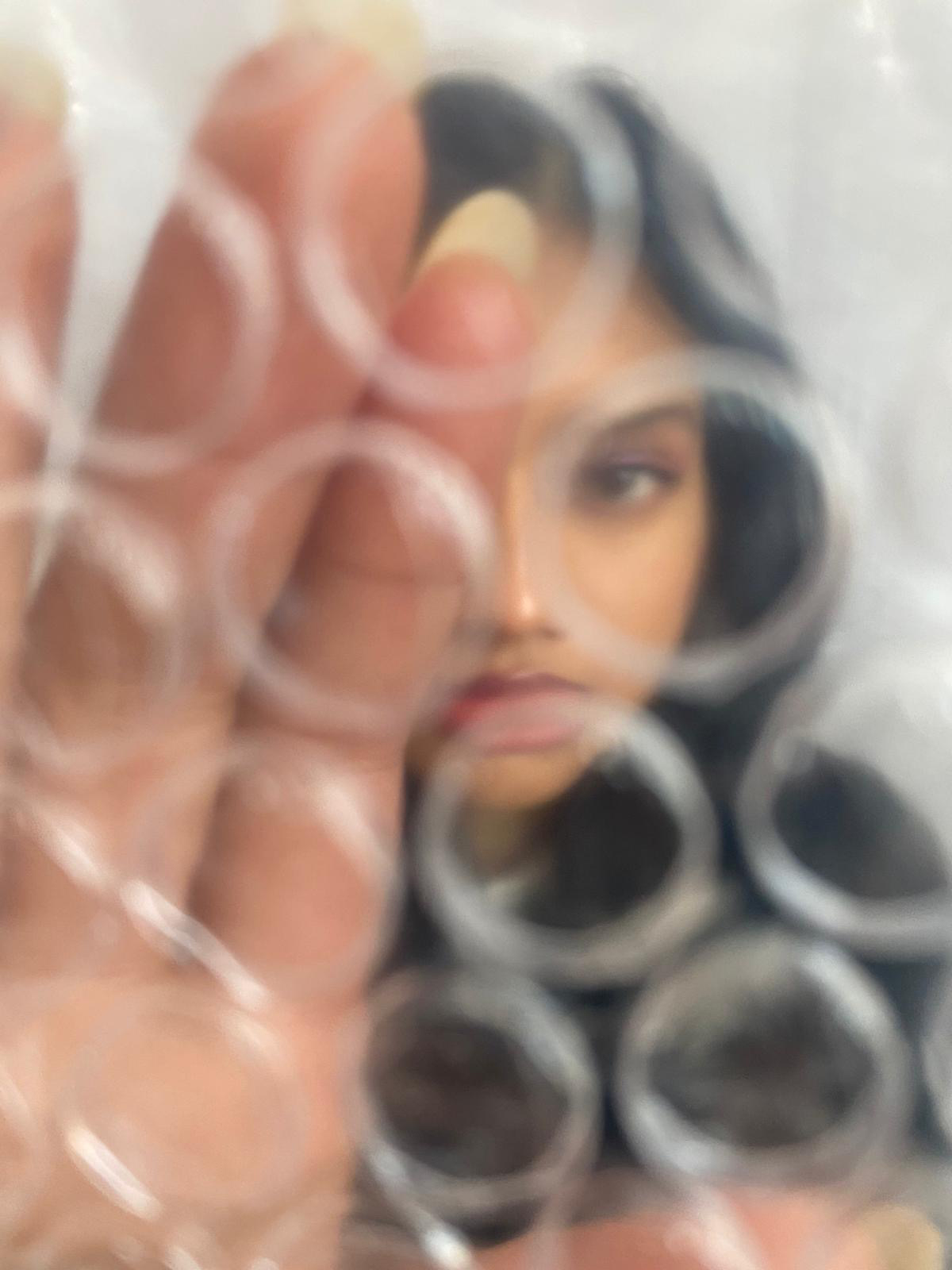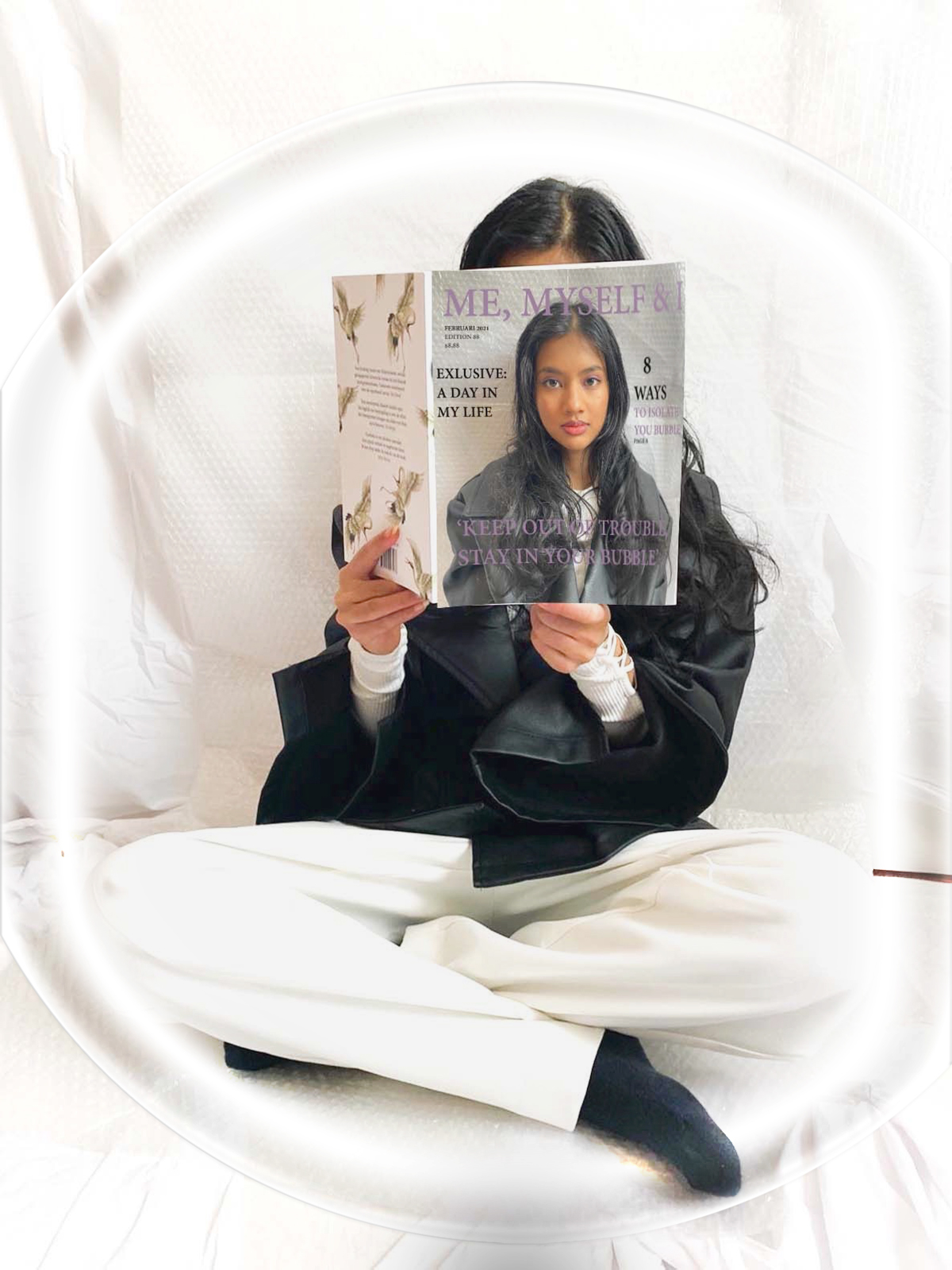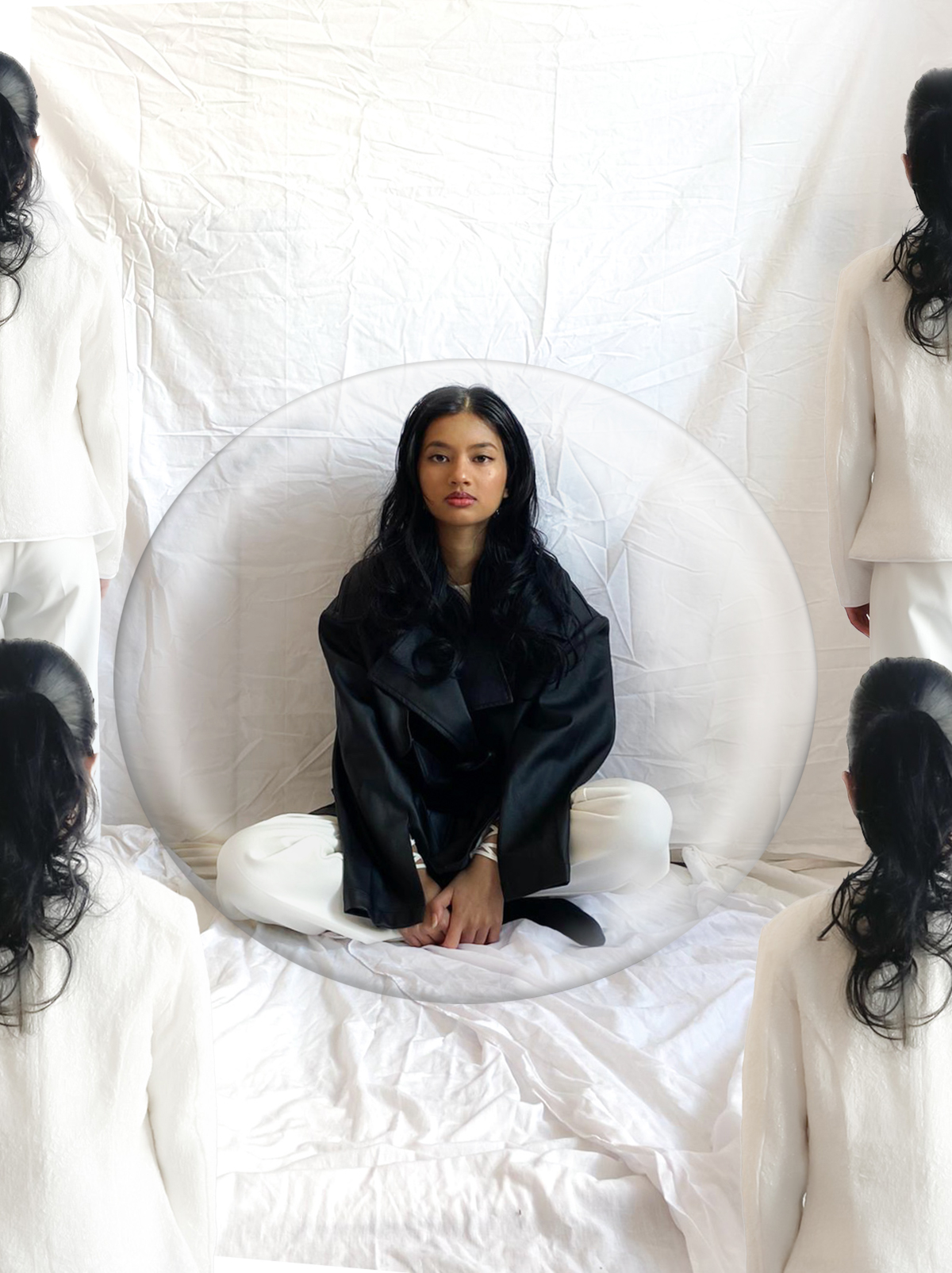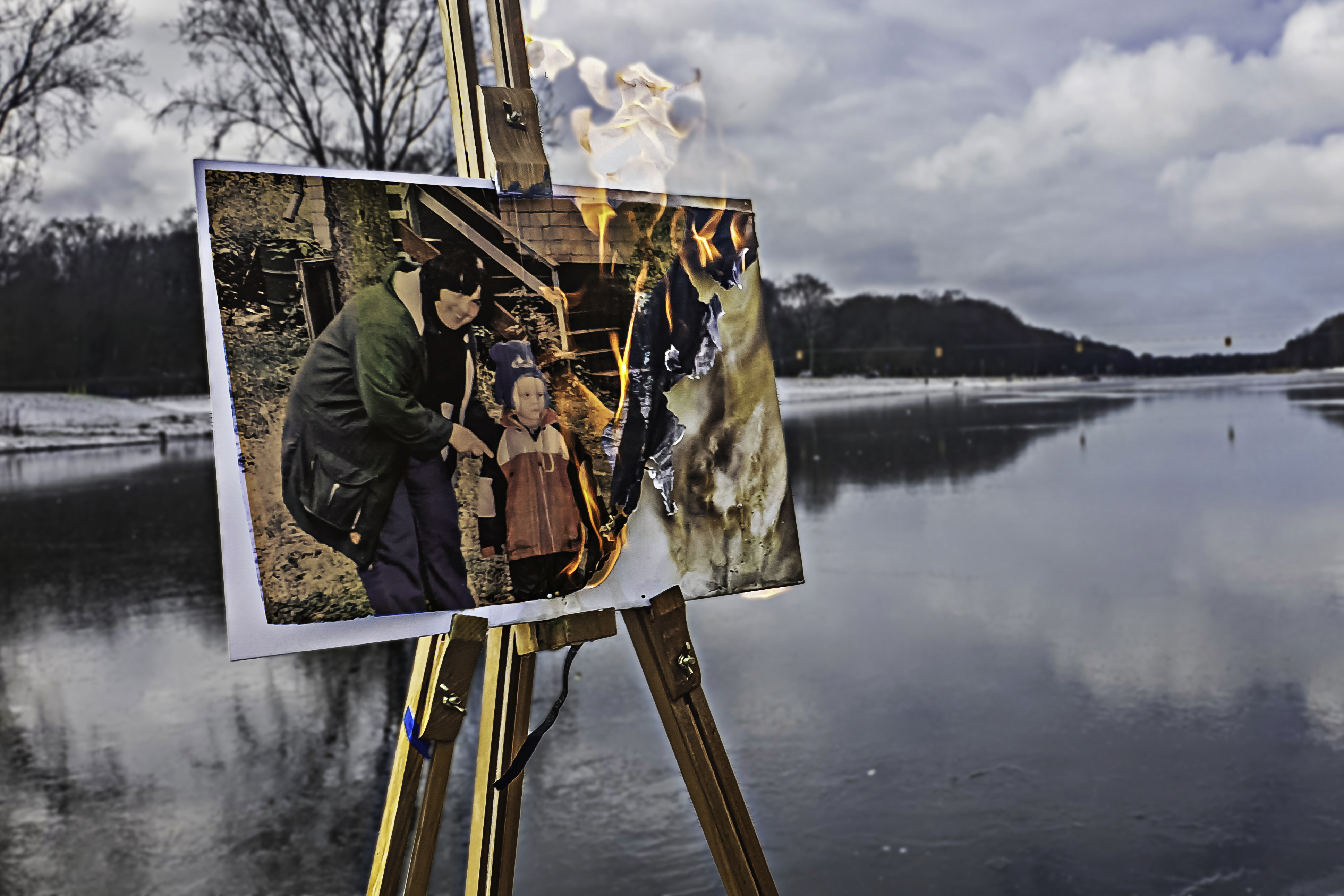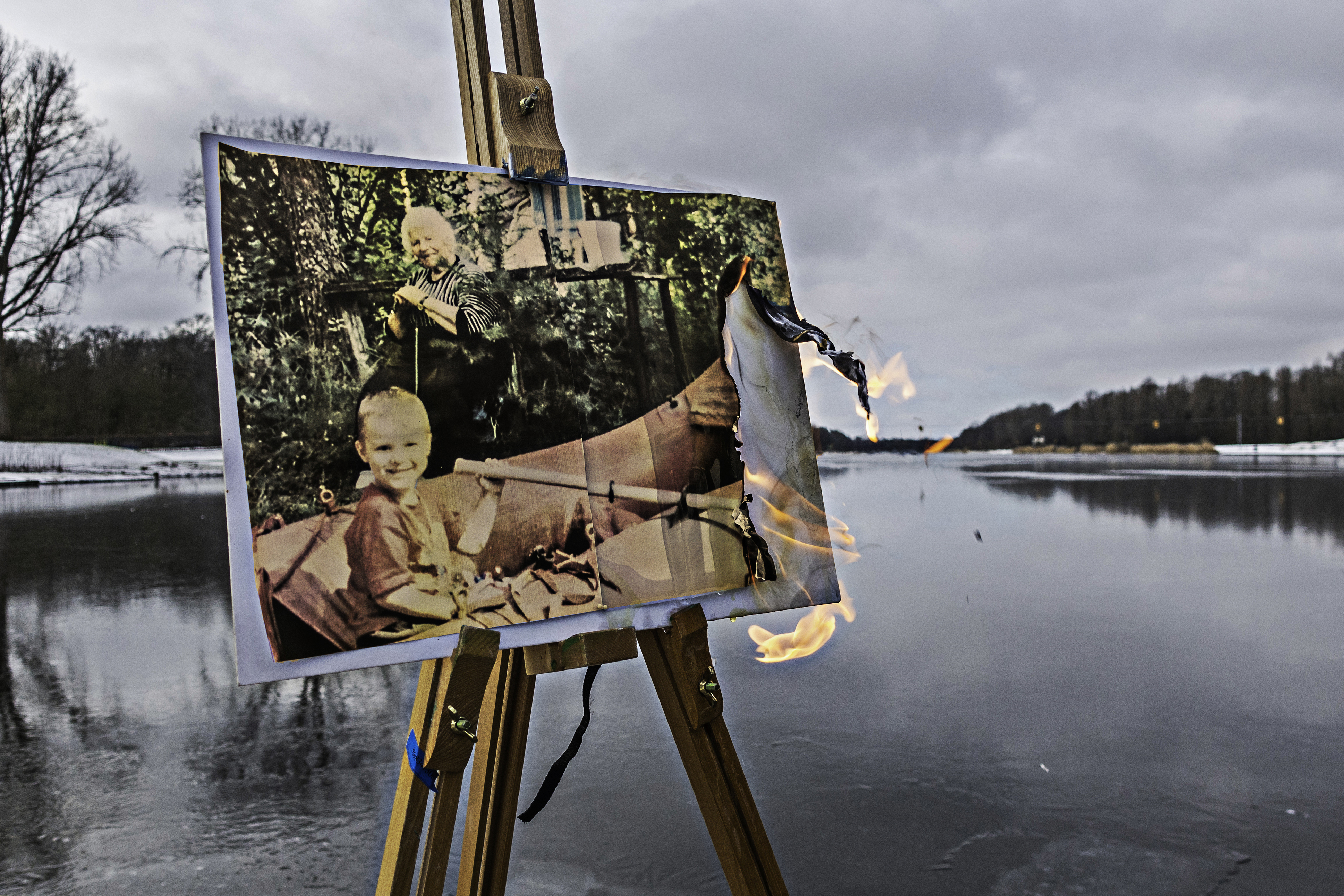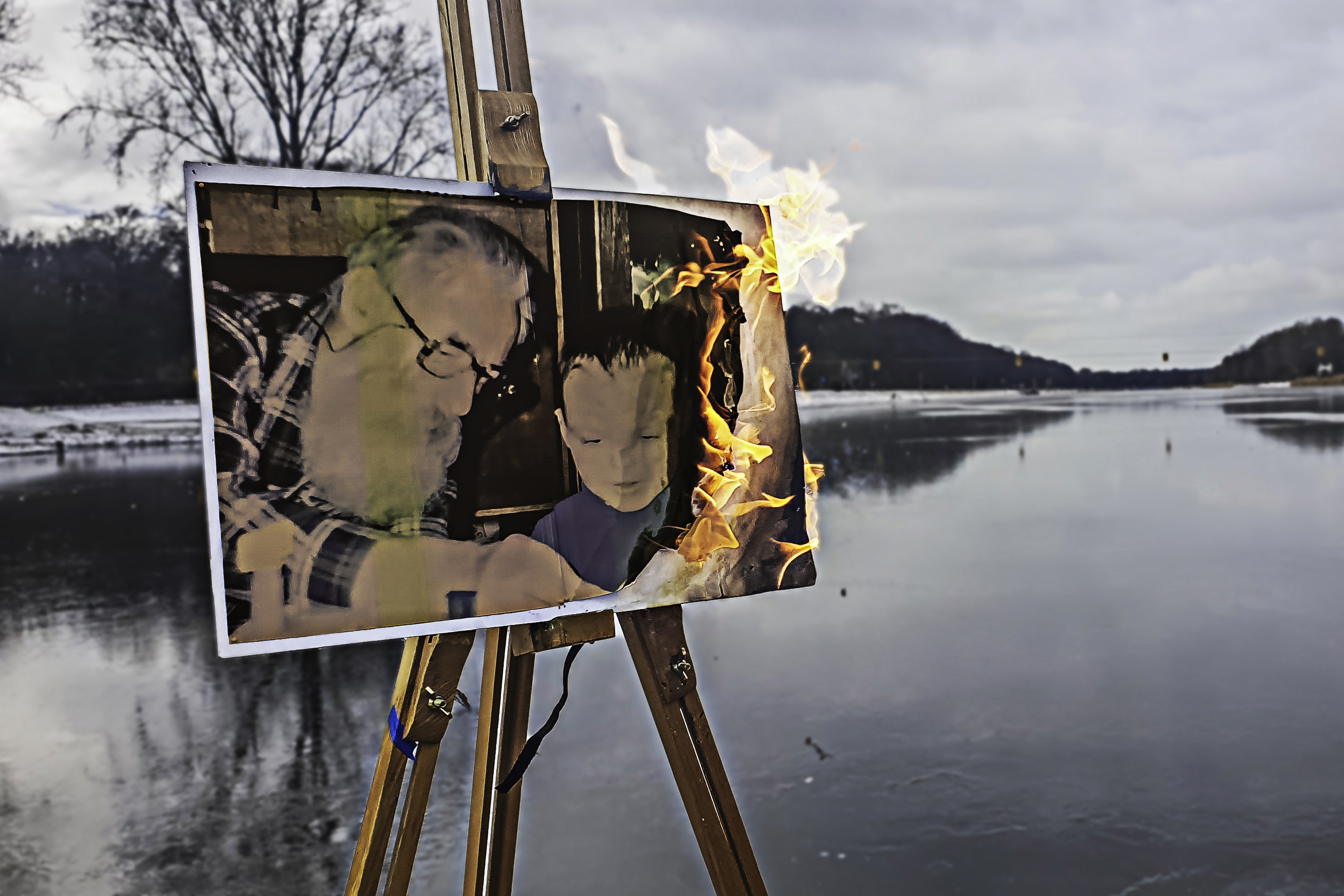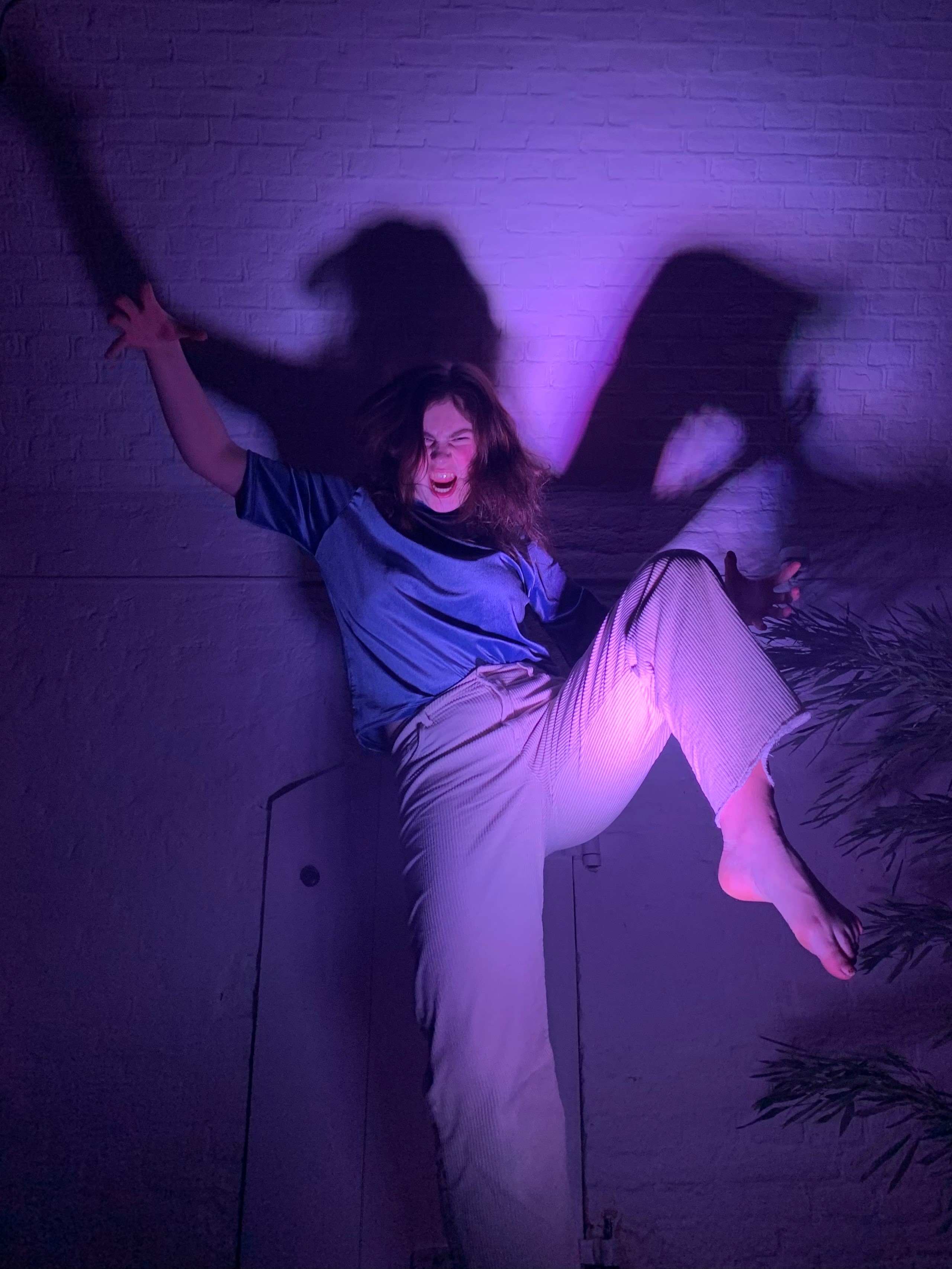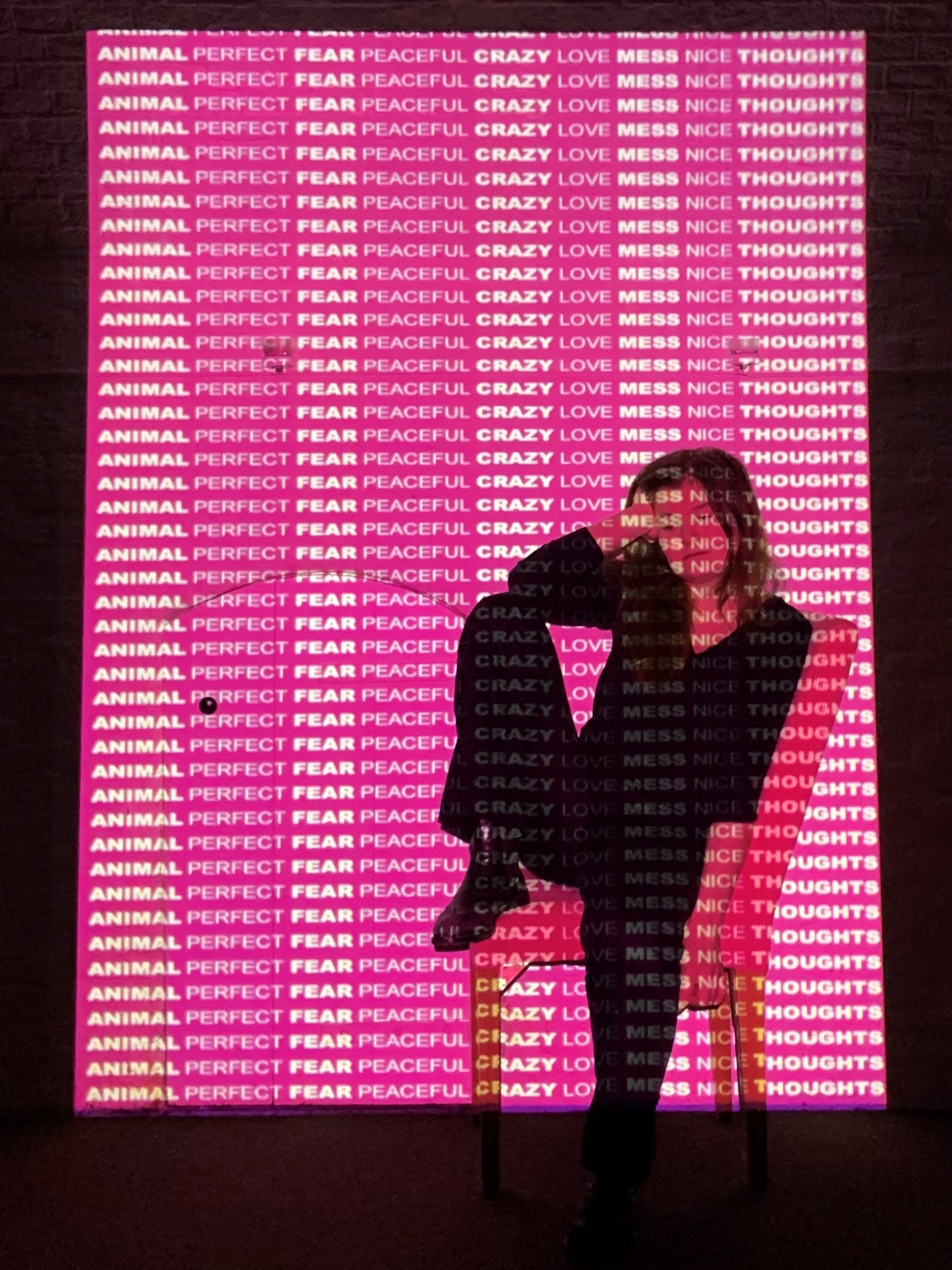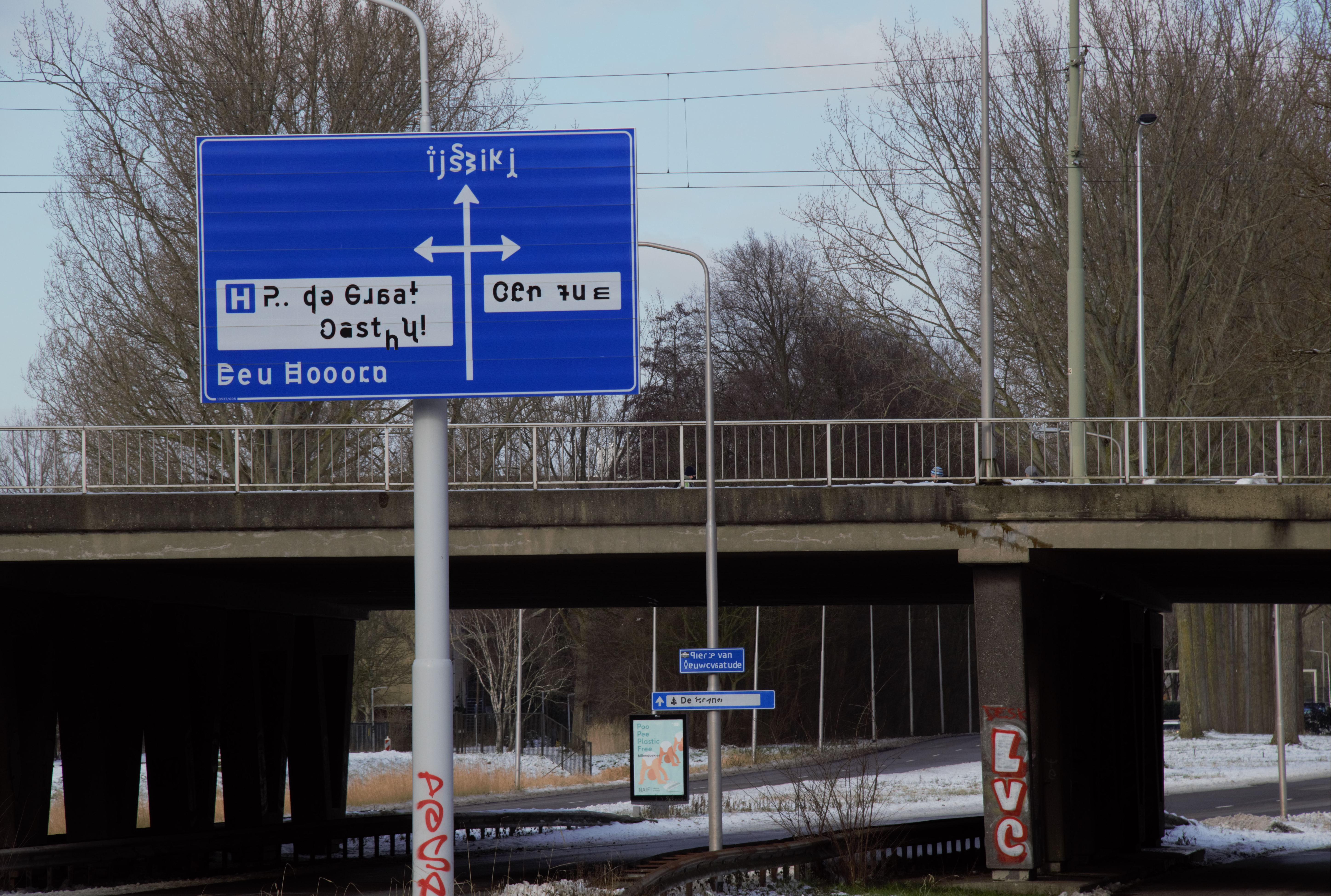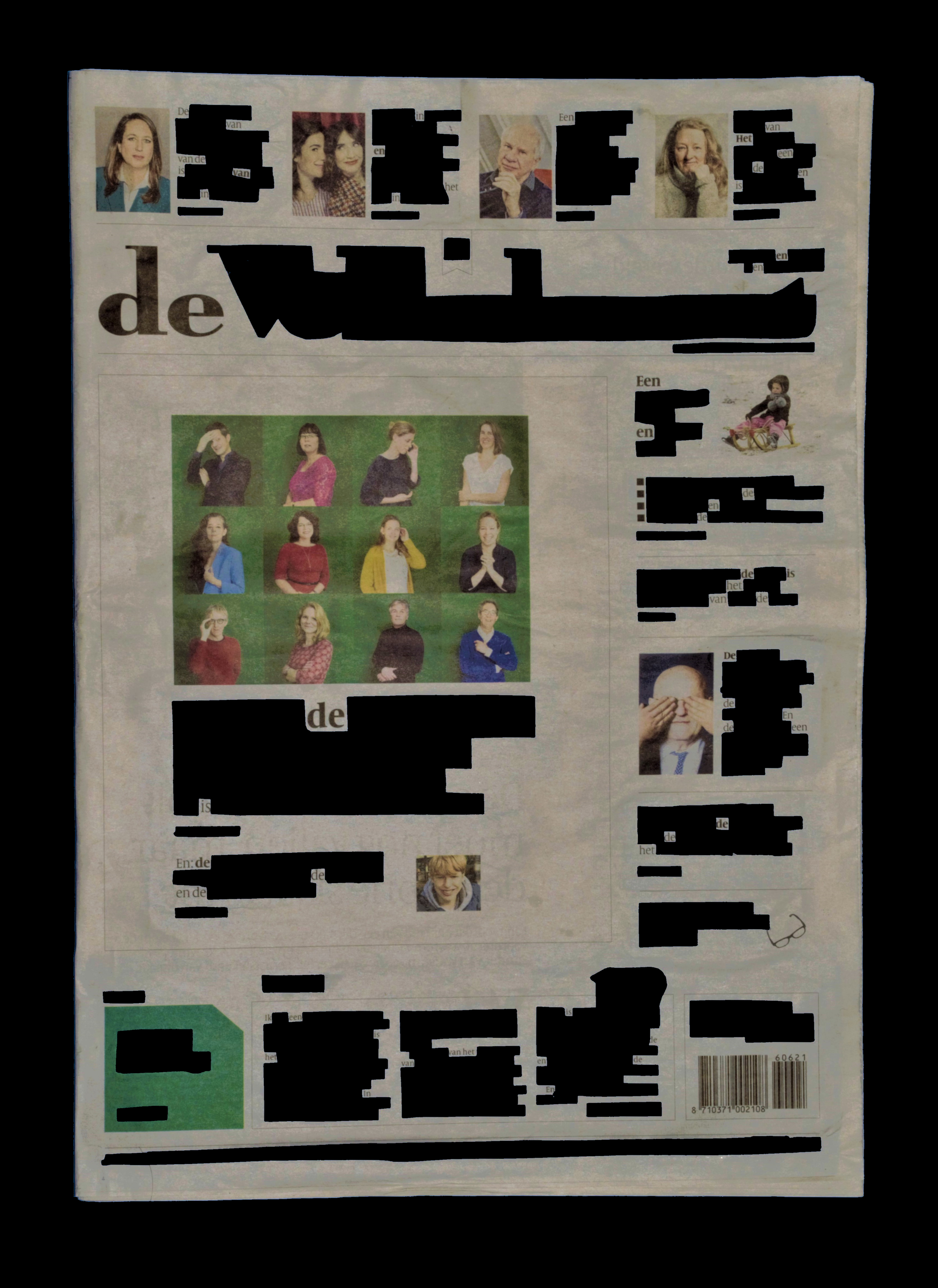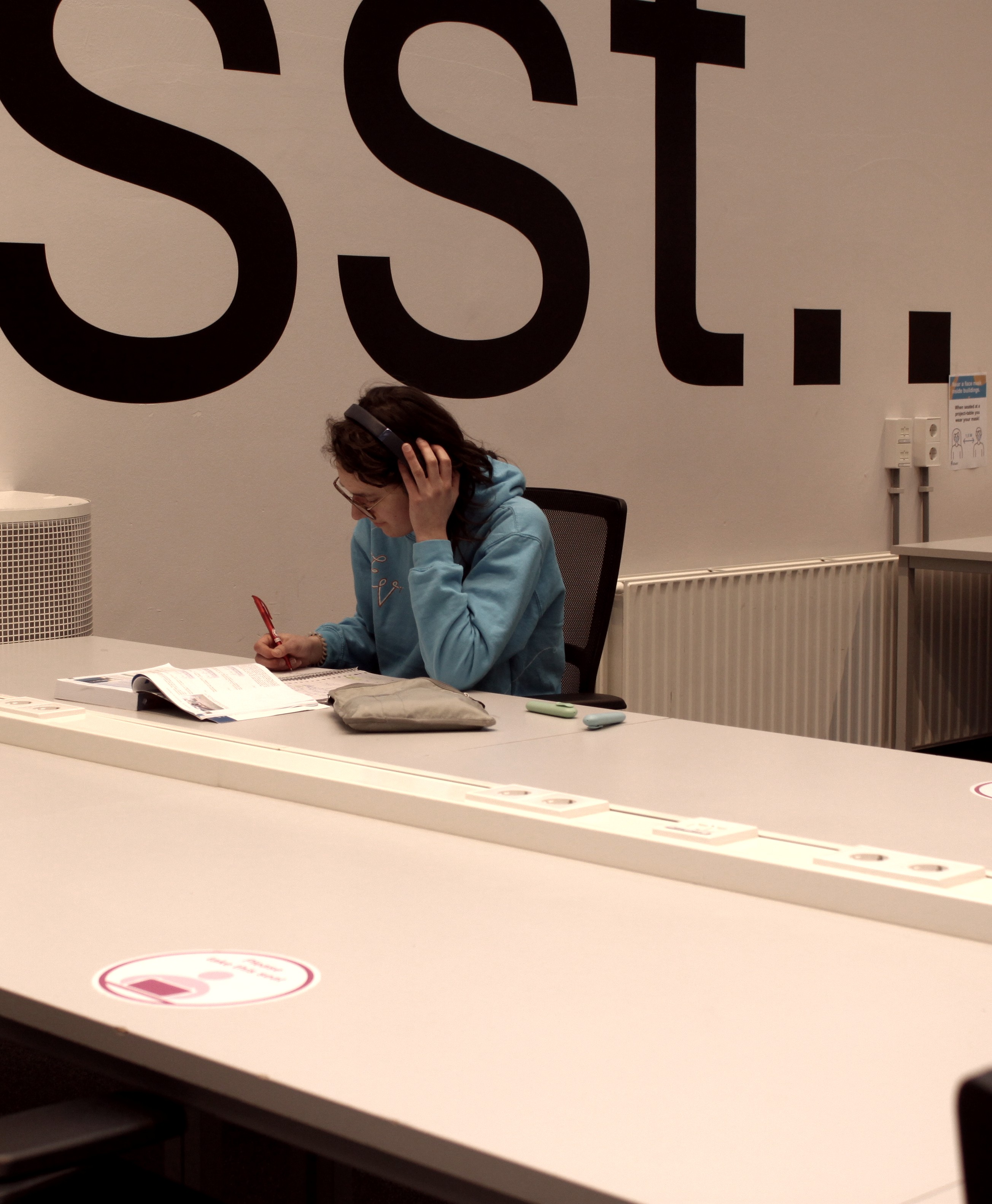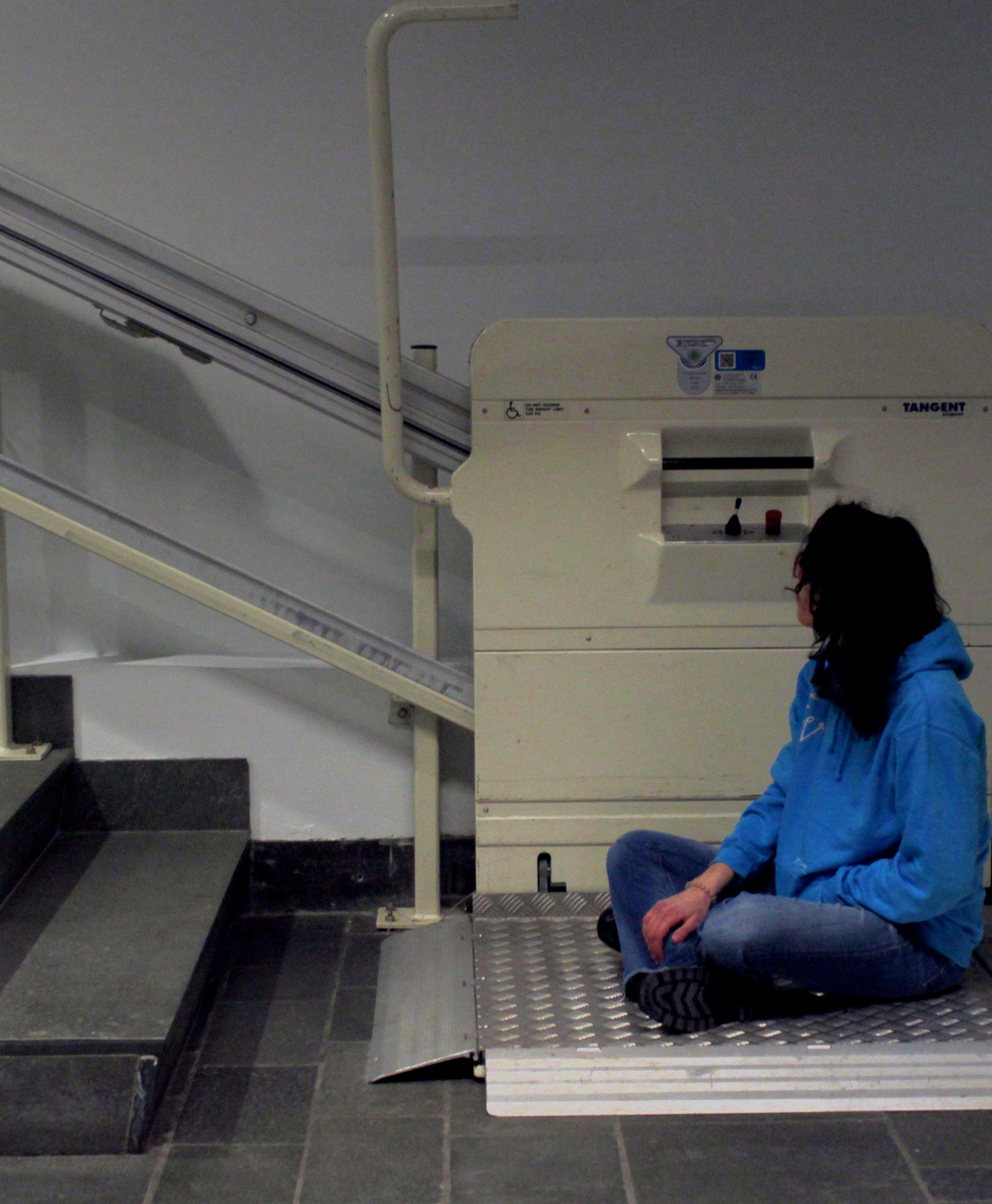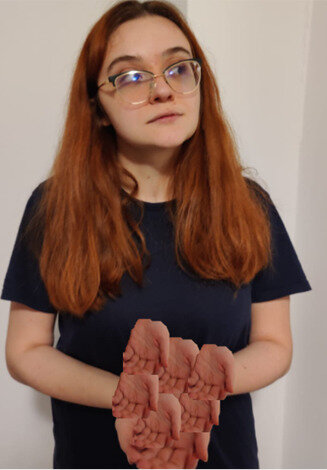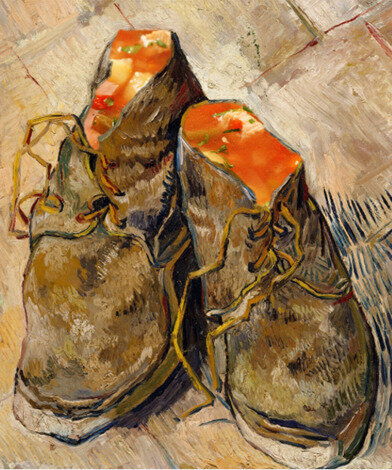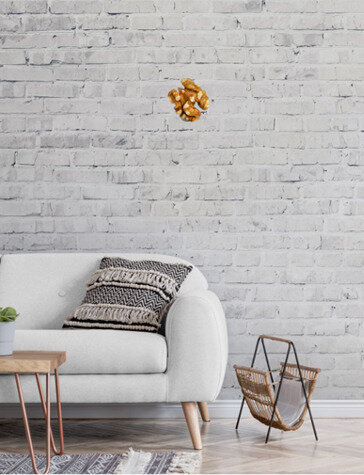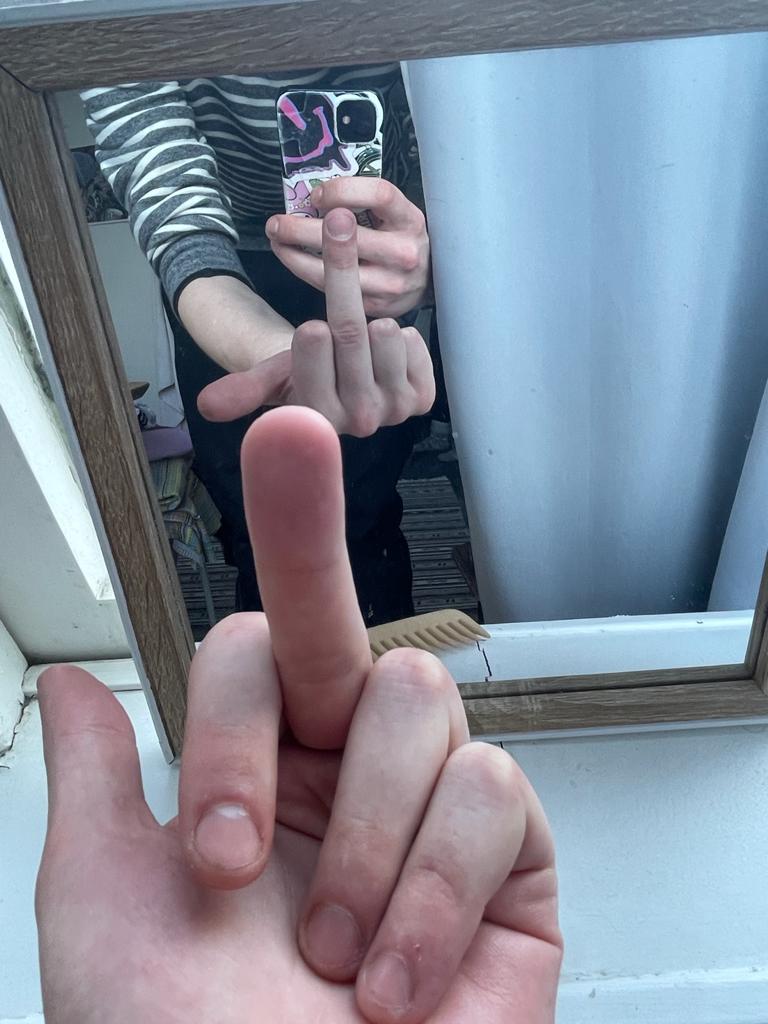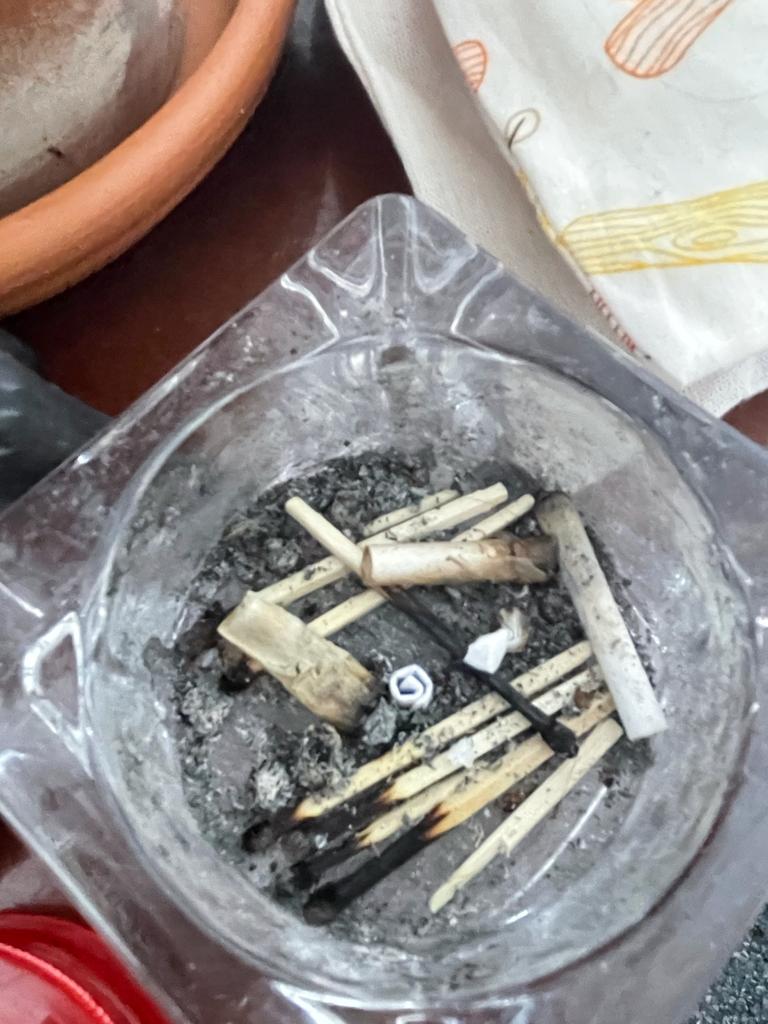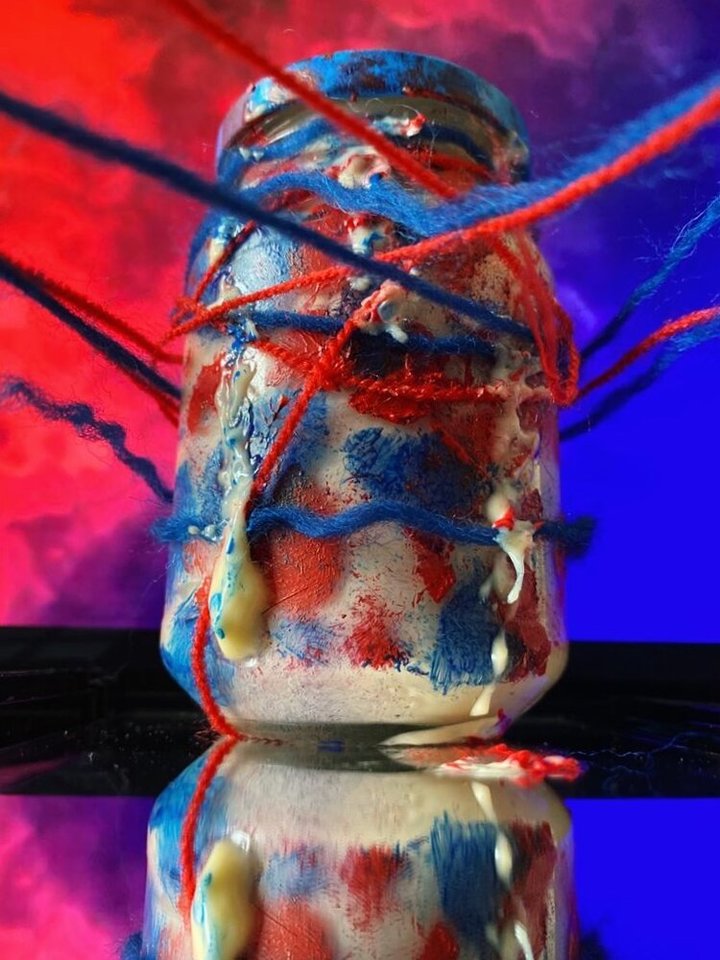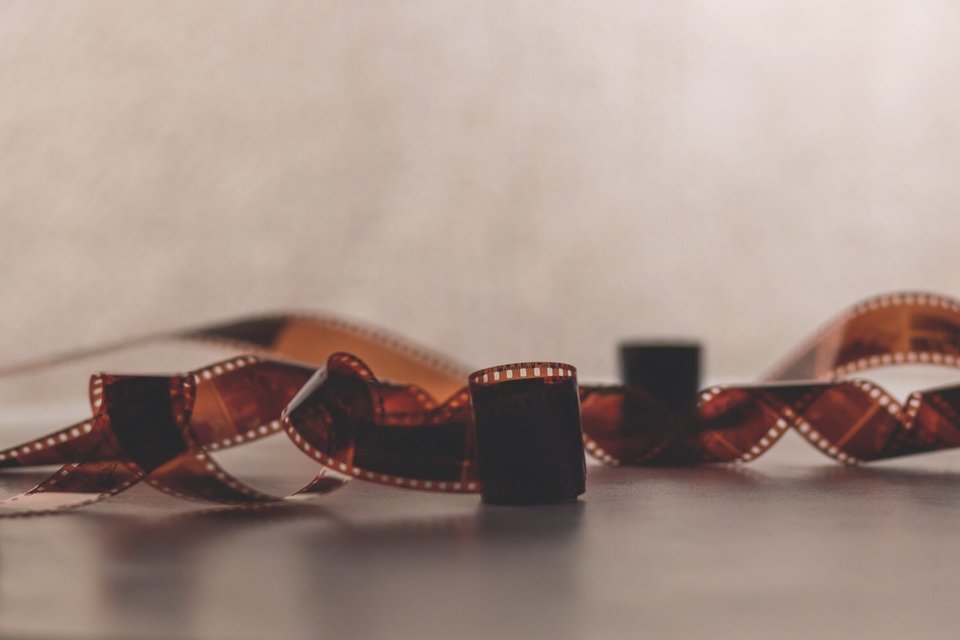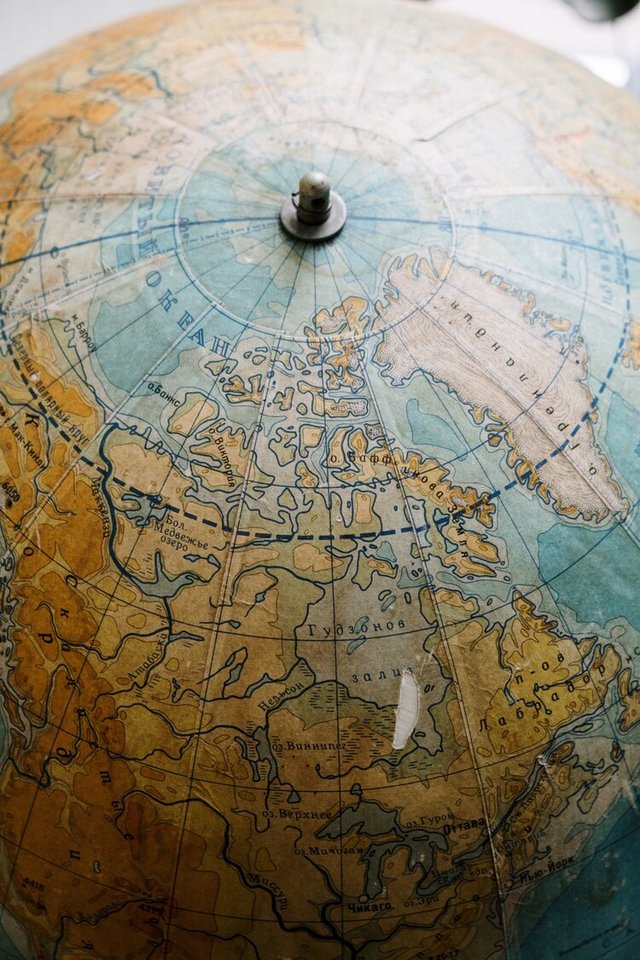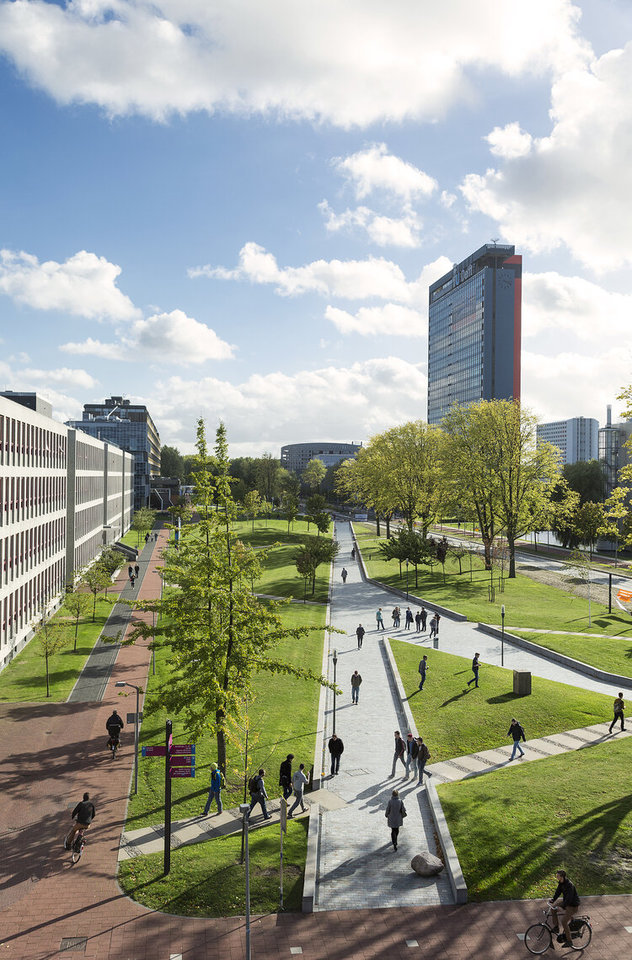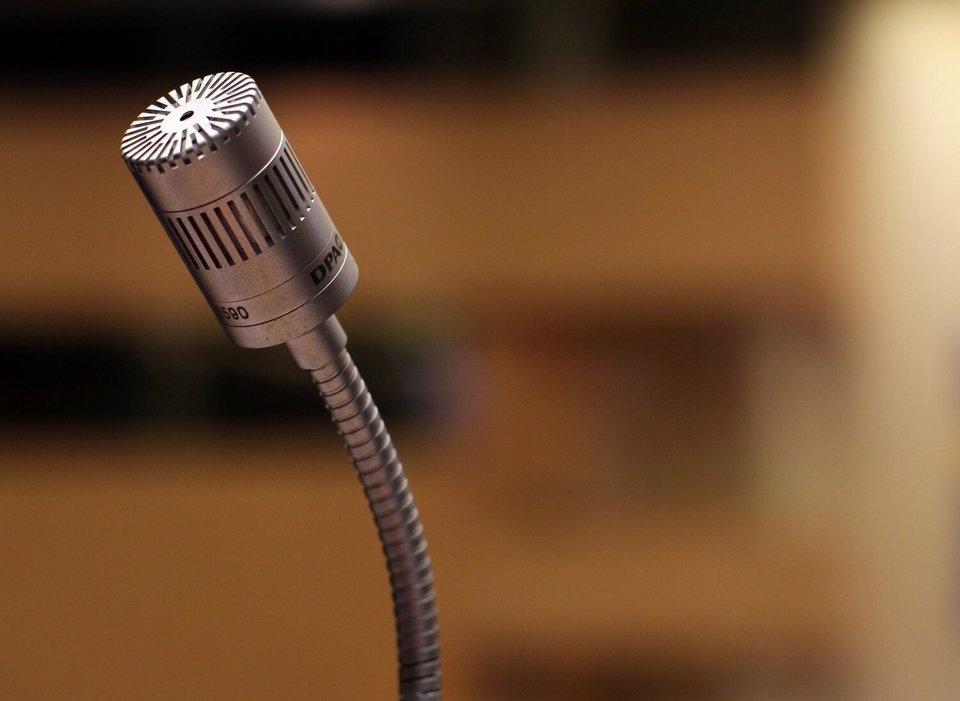For the course Art, Empathy & Ethics, which is part of the track Awareness & Culture, the students have experienced and produce art. Under the guidance of professional artists and using the tools and media suggested by the artist, the students have made an art project around an ethical or a societal problem related to technology. The students have gone through a journal of creativity and have been connecting with society through an empathic pathway. The final assignment for the students consists of an art assignment and an ethics essay assignment.
This year the students of AEE in Q2 have gotten the final art assignment of making a series of three pictures around the theme of “(dis-)connectivity”.
The Isolated But Fragile Bubble by Umika Bhagole
Umika Bhagole is a twenty-year-old student of systems engineering, policy analysis and management at the TU Delft University. Her interests are in diverse fields, from analyzing complex socio-technical problems, to practicing wushu (Chinese martial arts), to producing art. Umika has been intrigued by art and its potential to narrate and reflect on society and societal issues from a young age.
As an artist, she focuses on visualizing current societal issues that she perceives in her surroundings to bring a critical view and awareness on these topics through her art.
Umika likes to explore with full, bright, contrasting colors, such as black and white, which intensify antitheses she wants to narrate in her photos. By using simple surrealistic illusions, she conceptualizes her narrative and adds a modern, futuristic effect to her photography art.
Through her first series of three photographs ‘The Isolated But Fragile Bubble’, Umika Bhagole want to bring awareness of the tendency of humans to turn in their own bubble and thereby isolate themselves from innovation and different sounds. She wants to remind us to get out of our social bubble and to broaden our horizons by connecting with our surroundings.
Series of three pictures by Maxim Velli
From an early age Maxim Velli was surrounded by death. When he was nine, his grandmother passed away. Later that same year, his hundred year old great grandmother passed. Some years later - his aunt, then grandfather, then the other grandparents. In the hindsight, Maxim realises that he was accustomed to death and its presence in his life to such an extent that he did not fear nor was moved by it. This continued until the summer of 2020, when he was told by his father that his grandmother had recorded memoirs of her mother in 2001, the year when Maxim Velli was born. Her mother, Maxim’s great grandmother, born in 1910, lived through the First World War, the October Revolution, the pogroms and the Second World War along with everything that had happened in the Soviet Union in the 20th century.
As Maxim listened carefully to the stories of his jewish great grandmother, he realised the relativity of his own life. He realised how his life was a continuation of his ancestors’ lives and their experiences. Suddenly, a strong feeling of closeness with his roots and family members emerged; their life experiences gained value. He finally became aware of what premature death really meant. It meant that the person’s experiences were no longer there. And that, at the time, he was too young to perceive those experiences or form any memories himself.
In this series of 3 Maxim says farewell to his deceased relatives - grandmother, great-grandmother and grandfather as well as expresses grief about the fact that his memories of them only live in words of others, video and audio recordings and photographs.
Serie of three pictures done by Rosie Peeters
Rosie Peeters is an eighteen year old, second year’s Civil Engineering student at TU Delft. Being a young womanchoosing a career path, she finds herself wondering what truly excites her, resulting in her being uncertain what shewants to do with her life. Rosie’s always loved doing creative things, but she noticed that during her studies sheforgot about them. The Awareness & Culture specialization of the Honours Programme of her university gave herthe opportunity to reengage in making art again. With a passion for ethics and the how and why of things, sheusually gets inspiration from her own experiences in everyday life when writing essays, making collages andphotographs.
During the COVID-19 pandemic in 2020 she experienced a lot of overthinking and became aware thatbeing alone can be both peaceful and frustrating. Although it is common knowledge that human contact is essential,she feels that people overlook the importance. In February of 2021 she worked with shadows, colours and beam invarious photos to portray what isolation and disconnection can do to you. Rosie wants her audience to see that theyare not alone during hard times and hopes they will also see the positive things of being in solitude. In the future shewants to continue using art as a medium to express her concerns and view on things. Improving her writing skillsand deepen herself in philosophy are high on her wish list.
Series of three pictures by Kian Heus
Me
As a person, I’m always thinking about too many somethings. Currently my interests lie mostly in Mechatronics Engineering, playing the piano and beach volleyball, and meeting as many people as these uncertain times allow. I’m hardworking to a fault, and mostly inexperienced with art. I donate blood and am a bone marrow donor, simply for the moral high ground it gives me.
Q: Any inspirations?
A: A YouTube video in which people spoke fake English which was extremely convincing on a surface level, but had no meaning whatsoever.
The Work
The work describes the struggles of illiterate people in a daily setting. As a disclaimer, I do not personally know any illiterate people and I am fully aware that the pieces I have created are completely inaccurate for how these people actually read. Luckily they won’t be able to figure that out anyway :)
Q: Who is this art piece for?
A: Anyone who happens to see it. There is no specific audience because it does not require specific action. It is a piece which simply aims to shine a bit of light on the world of illiterate people.
The Bigger Picture
This piece is relevant to our society because (partial) illiteracy is actually a much larger problem than most people realize. Over 1 million people in the Netherlands have low literacy, and over 200.000 are illiterate.
Q: Favourite picture?
A: Conceptually, “500 miles”. Sadly I did not have enough time to work this out the way I wanted to. I really like the way “De Vlkskrnt” turned out so if I had to pick one out of these three it would be that one, even though the message is not instantly clear from that piece.
Series of three pictures by Anneriet Krol
1. How loud and noisy many places are, which is an issue for people with ADHD or autism.2. How there are many places with too much light, which is an issue for visually impaired orlight sensitive students 3. How many places are inaccessible to wheelchair users or people with limited mobility. And I hope that this will make people think about these things like I have, so that accessibility is no longer an afterthought. But that instead, architects and designers will aim from the start, to make sure that everyone can use the spaces and things that they are designing
Umika likes to explore with full, bright, contrasting colors, such as black and white, which intensify antitheses she wants to narrate in her photos. By using simple surrealistic illusions, she conceptualizes her narrative and adds a modern, futuristic effect to her photography art.
Through her first series of three photographs ‘The Isolated But Fragile Bubble’, Umika Bhagole want to bring awareness of the tendency of humans to turn in their own bubble and thereby isolate themselves from innovation and different sounds. She wants to remind us to get out of our social bubble and to broaden our horizons by connecting with our surroundings.
Series of three pictures by Laura Pîrcălăboiu
Laura Pircalaboiu is a Romanian 20 year old artist currently based in Delft, the Netherlands. She was brought upin Italy by two Romanian parents with which she eventually returned to their home country. She considers themix of cultures pivotal to her identity and personality. She then made the decision to move to the Netherlands atage 18 to experience a completely different culture than what she was used to. In high school, she liked doingvolunteering work and likes explaining science concepts to children in her free time, and currently works as a Teaching Assistant at her university. She values accessibility and thinks everyone should have a fair shot atlearning and accessing opportunities.
She likes thinking about life and the subjects of her work through the lensof surrealism and dadaism – giving everyday objects a humorous spin is central to her art pieces. She is also inspired by Romanian poet Tudor Arghezi, and his concept of the “aesthetics of the unappealing”. The series of three images is a window into the mind of a first generation immigrant, much like herself and herparents. Laura aimed to recreate the sense of confusion generated by seeing expressions or idioms in anunfamiliar language, and tried to convey how much of a barrier this is in simple day to day communication. Initself, this speaks about the invisible hoops that immigrants have to jump through every day to be placed onequal footing with natives.

